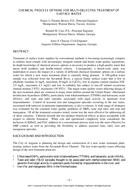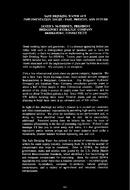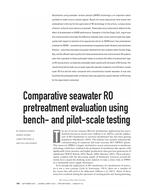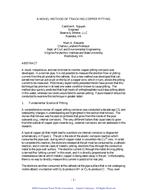Provide PDF Format
AWWA WQTC56972
- Chemical Process Options for Multi-Objective Treatment of Surface Water
- Conference Proceeding by American Water Works Association, 11/01/2002
- Publisher: AWWA
$12.00$24.00
Treatment of surface water supplies by conventional methods is becoming increasingly complexas utilities must comply with increasingly stringent current and future water quality regulations.In-depth knowledge of chemical process options is necessary to produce a high-quality water thatmeets both aesthetic and health-related criteria. Consequently, a bench-scale study wasundertaken to assess the impact of a variety of different chemical treatment options on a surfacewater for which a new water treatment plant is currently being planned. A 100-gallon watersample was collected from the Savannah River, a typical flashy surface water that is low inalkalinity (median 14 mg/L, maximum 20 mg/L as CaCO3), low in organic content (median TOC2.9 mg/L, maximum 4.5 mg/L) and low in turbidity but subject to run-off related excursions(annual median 2 NTU, maximum 130 NTU). The major water quality issues affecting design ofthe new treatment plant are common to many water utilities around the United States: chlorinateddisinfection byproducts (DBPs), particularly total trihalomethanes (TTHMs) and haloacetic acids(HAAs), and taste and odor episodes associated with algal activity in upstream riverimpoundments. Control of seasonal iron and manganese episodes occurring in the raw water,associated with turnover in upstream impoundments, is also a concern. A wide range of strategieswas evaluated for the common water quality problems of DBPs, taste and odor, and iron andmanganese. Of all the treatment scenarios tested, ozone was the most effective for addressing allof these concerns. Chlorine dioxide did not produce beneficial effects at doses acceptable withrespect to chlorite formation. When cost and operational complexity were considered, theinclusion of KMnO4 and PAC addition in a conventional process train was the most effective forDBP control, as well as providing the flexibility to address seasonal taste, odor, iron andmanganese episodes. Includes 6 references, tables, figures.
Related Products
AWWA ACE94037
Safe Drinking Water Act Implementation Issues - Past, Present, and Future..
$12.00 $24.00
AWWA JAW65073
Journal AWWA - Comparative Seawater RO Pretreatment Evaluation Using Bench- and Pilot-Scale Testing ..
$15.00 $30.00





